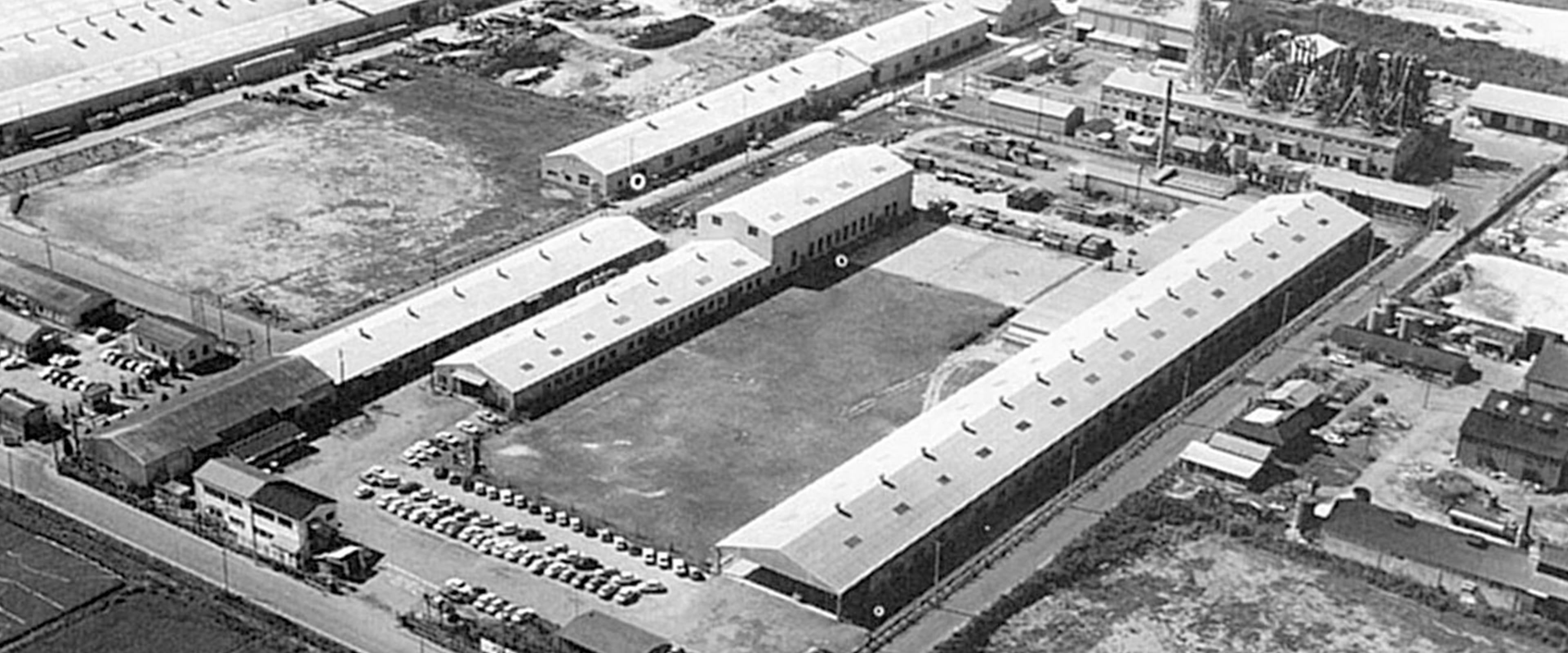HISTORY
In October 1949, Noboru Inoue, the founder of Cleanup, started the manufacture and sale of zataku (Japanese low table) tables. The company's first starting point was on a site of only 860 square meters in Nippori, Arakawa-ku, Tokyo. Later, Inoue Shokutaku Co., Ltd. was established and the company was renamed Inoue Kogyo Co. In 1961, the trademark "Cleanup" was born.
While the company has constantly evolved and deepened its corporate image, from the development, manufacture, and sale of water-related products, from the zataku table to the stainless steel sink, and then to the development, manufacture, and sale of systemized kitchens and other water-related products, the accumulated technology and know-how and the passion for manufacturing have been passed down to this day as the company's DNA.
Cleanup brand movie
1949
Started the manufacture and sales of zelkova wooden tables as a sole proprietorship in Arakawa, Tokyo
Zelkova wooden tables
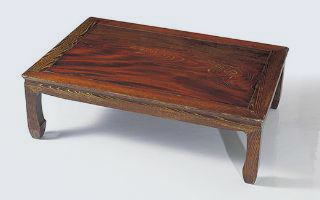
1954
Inoue Shokutaku K.K. founded

1960
Renamed Inoue Industries Corp.
Stainless-steel sink stands
Started the manufacture and sales of stainless-steel sink stands (photo: prototype produced in 1959)

1961
Cleanup trademark launched
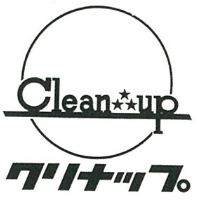
CSM sink stand with rice bin
CSM sink stands with rice bins introduced as the first products to feature the Cleanup trademark

1962
The new Hisanohama factory (Iwaki, Fukushima Prefecture) opened
1963
The Kitakyushu branch opened as the first sales facility

1967
The new Yotsukura factory (Iwaki, Fukushima Prefecture) opened


1968
Stainless-steel sink stands "Diamond Leather" and "Opal"
Two products—Diamond Leather and Opal—introduced in the jewels series as the first deep stainless-steel sink stands in the industry

1969
Cleanup Dealers Association formed (became Cleanup Partners Association in 1974)
1970
The first showroom opened in Iidabashi (Tokyo)
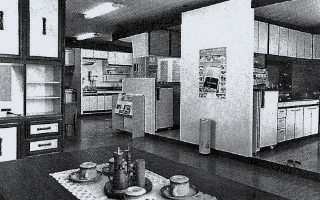
Model B bath vanity
Models B, BS, and BH introduced as the Company's first bath vanities, combining cabinets with sinks and faucet fixtures
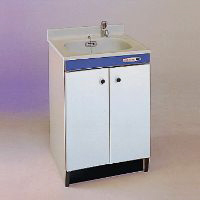
1971
Cleanup Joban Kogyo K.K. (Iwaki, Fukushima Prefecture) established (now the Yumoto factory)

1972
Sink stand equipped with strainer plate
Introduced the industry's first sink stand equipped with a strainer plate, which made it possible to strain ingredients hygienically by eliminating the need for a wash basket that consumed cabinet space

1973
Japan's first systemized kitchen
Japan's first systemized kitchen introduced, marking the company's start as a pioneer producer of systemized kitchens

1974
Paired sink stands
Paired sink stands introduced in all main mid- to top-range products. Sales volumes increased rapidly during the first oil crisis, thanks to a sales policy of leaving prices unchanged.

The new Kashima factory (Iwaki, Fukushima Prefecture) opened
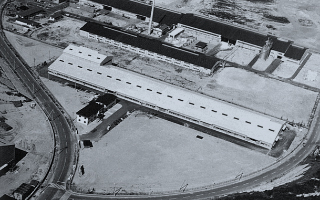
1975
Cleanup Exclusive Dealers Association formed
Stainless-steel sink stand with cabinets "Sakura DX"
Sakura DX, the first stainless-steel sink stand with cabinets to include side, back, and bottom panels, introduced

1976
Cleanup Stainless Processing Co., Ltd. (Iwaki, Fukushima Prefecture) established

Systemized kitchen "Modern"
Full-fledged entry into the systemized kitchen market with the introduction of two systemized kitchen series: Modern and Classic. The Classic series emphasized a traditional American-style design and represented our first international technological partnership
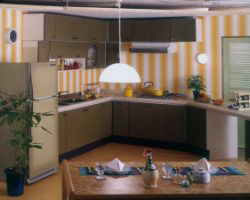
1978
Stainless steel coloring technology adopted from Inco Europe and Nippon Steel Corporation
Colored stainless steel bathtub "Marchen" (named after the Little Mermaid tale)
The Marchen series of colored stainless steel bathtubs introduced, which featured new multicolor designs using Inco Color chemical coloring technology that depicted patterns designed by the shadow artist Seiji Fujishiro

Counter Kitchen
Counter Kitchen, the predecessor to the later Clean Lady series, introduced, which provided a luxurious combination of the high quality of stainless steel cabinets with the streamlined nature of a systemized kitchen
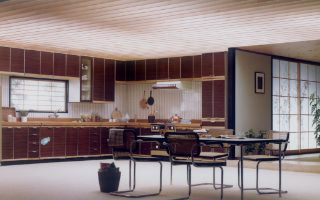
Stainless steel cabinet sink stand
Another stainless-steel sink stand with cabinets was introduced in response to increasingly diverse design needs and became a best-selling product to that date
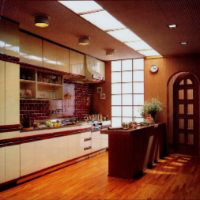
1981
Cleanup Okayama Industry K.K. (Katsuta-gun, Okayama Prefecture) established
1983
Trade name changed to Cleanup Corporation.
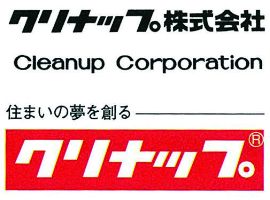
Clean Lady systemized kitchen
Clean Lady, the first easy-installation systemized kitchen in the industry, introduced. Became a best seller product as its slogan, "I'm going to buy a systemized kitchen" caught on.
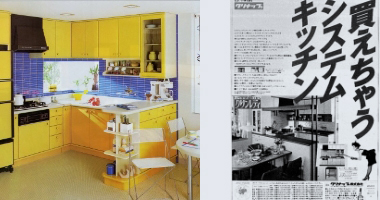
1984
The new Kashima System factory (Iwaki, Fukushima Prefecture) opened

1985
Systemized bathroom "Matsunoyu"
The Matsunoyu and Takenoyu series of plastic bath units, the first in the industry to incorporate Japanese design elements, were introduced. These were developed as bath units for 3.3-square-meter spaces and emphasized spaciousness and relaxation.

1986
New Cleanup Production System (CPS) adopted

1987
Systemized bathroom
Two types of stainless-steel systemized bathrooms were introduced. These were developed as products perfect for installation in two-family households and apartments, as well as the remodeling of single-family homes.
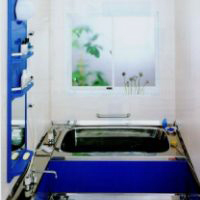
Systemized kitchen
Two models introduced as the top-of-the-line products in the Modern series introduced in 1976: Norman Birch and Norman Oak.
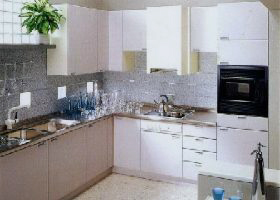
1988
Technical partnership formed with ICI (UK) on production of artificial marble
1990
Systemized kitchen "Clean Mrs."
High-end systemized kitchen "Clean Mrs." introduced. The sink variant in this series spurred the introduction in the industry of a succession of products with similar sinks.

1991
Systemized bathroom "COSS"
COSS systemized bathroom introduced and featured spaciousness and relaxation based on the concept of a space-creating bathroom

1992
The new Crate factory (Iwaki, Fukushima Prefecture) opened
1994
Chairman Emeritus Noboru Inoue awarded the Distinguished Fourth Order of the Rising Sun, Gold Rays with Rosette

1996
The new Cleanup Research Institute (Iwaki, Fukushima Prefecture) opened

1997
Systemized bathroom
Universal design systemized bathrooms that featured slip-resistant flat floors, handrails, and other enhancements for comfort were introduced.

1998
Compact kitchen "colty"
Compact kitchen "colty" introduced for use as a subkitchen in two-family households or in apartments offering a full range of functions needed for preparing meals in the minimum necessary space

Systemized kitchen "S.S."
Systemized kitchen "S.S." introduced that featured fully sliding stainless steel cabinets, realizing outstanding durability and cleanliness while able to store large volumes.

1999
Systemized kitchen "Clean Lady" with foot-level containers
Clean Lady, the first systemized kitchen in the industry to be equipped with Floor Container, introduced. Other new products included eye-area range hoods, which collected exhaust more efficiently and were much easier to clean than previous models, and sliding full-opening dishwashers.

2004
Shanghai Cleanup Co., Ltd., established as a joint venture for the manufacture and sale of systemized kitchens
Aqua living amenity space "AQULIA"
Aqua living amenity space "AQULIA" enabled coordinated solutions for vanities and baths. The baths included first-in-the-industry features of water jets to massage the soles of the feet and grip-stone floors resistant to wetting and slipping.

2005
Cleanup (Shanghai) Co., Ltd. established
Kanshanosato Iwaki premium senior citizens' home (Iwaki, Fukushima Prefecture) opened by Cleanup Career Service Corporation

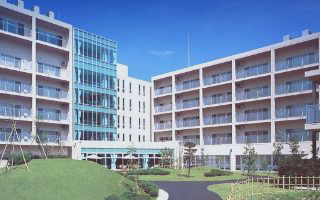
The new Tsuyama factory (Tsuyama, Okayama Prefecture) established by Cleanup Okayama Industry K.K.

Super Silent e-Sink
S.S. and Clean Lady series systemized kitchens equipped with Super Silent e-Sinks, the first in the industry to keep down water noise while resisting mineral encrustation from water and scratches, introduced. This technology later was renamed Be Silent Sink.
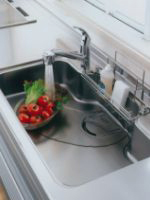
2006
Started a national network "Mizumawari-koubou", a membership organization.

2007
Self-cleaning Cooker Hood
Introduced the first automatic self-cleaning Cooker Hood in the industry. Bundled with the S.S. and Clean Lady series, the product had a major impact on the market by making kitchen cleaning more efficient.
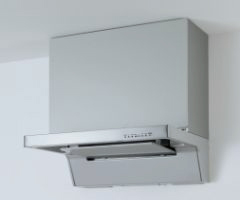
Smile 20 twenty-year support program launched

2008
Founder Noboru Inoue passes (aged 87 years)
Systemized kitchen "rakuera"
rakuera, a new type of massmarket systemized kitchen with interior-design elements like furniture, fully fitted with flooring and coordinated with the living room, introduced

2009
Systemized bathroom "hairo"
Systemized bathroom "hairo", a massmarket series reflecting consideration for bathing by children, introduced

2010
New corporate logo developed

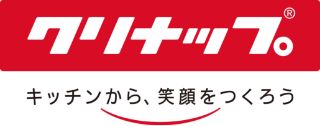
2011
Stainless steel cabinet kitchen "Clean Lady"
Clean Lady, equipped with stainless-steel cabinets as standard and incorporating value in areas of sanitation and cleanliness, introduced

2012
Kitchen Town Cleanup Osaka (Osaka Showroom), a showroom in the sky, opened (later renamed Cleanup Kitchen Town Osaka)

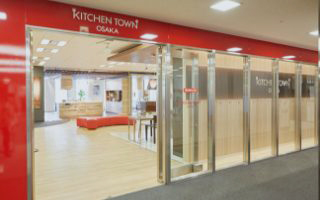
Cleanup Foundation (Iwaki, Fukushima Prefecture) established as part of efforts to support disaster recovery in Fukushima Prefecture (accredited as a public interest incorporated foundation in 2013)
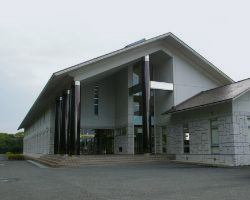
2013
Systemized bathroom "yuasis"
Systemized bathroom "yuasis" introduced to replace the hairo mass-market systemized bathroom series; the new bathroom emphasized interior design in harmony with the living space

2014
First exhibited at Milano Salone 2014 (Italy), an international furniture show
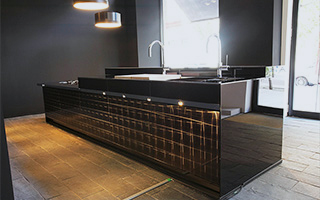
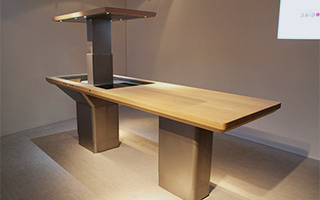
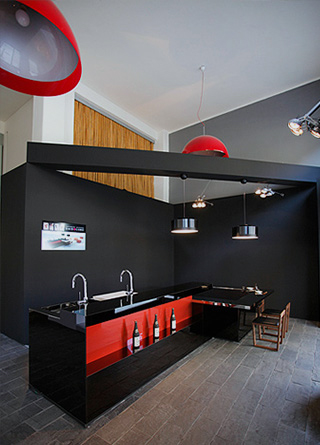
2015
Cleanup Kitchen Town Tokyo (Shinjuku Showroom), a showroom emphasizing empathy, opened

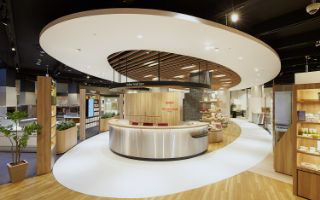
Stream Flow Sink
On the 32nd anniversary, Clean Lady was bundled with the Stream Flow Sink, a new feature reflecting scientific study of water flows in the sink, as a standard feature
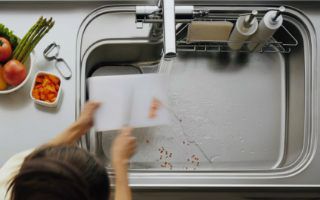
2016
New dining space proposed in Milano Salone 2016 (Italy)
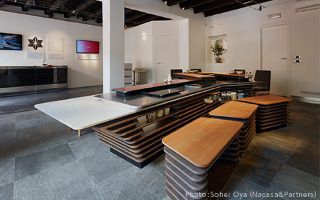
Cleanup Kitchen Town Nagoya (Nagoya Showroom) opened

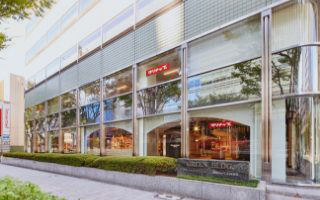
Stream Flow Vanity
This brought the concept of the Stream Flow Sink used in systemized kitchens to the vanity cabinet. FANCIO, a vanity equipped with the newly developed Stream Flow Vanity LL, introduced.
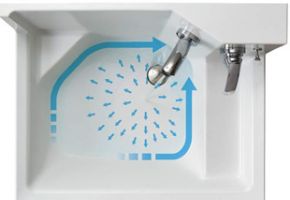
2017
Transaction contract concluded with Valcucine (Italy). Domestic showroom Valcucine Tokyo (Minato, Tokyo) opened.

2018
Stainless steel systemized kitchen "CENTRO"
CENTRO, a series with more advanced beauty and functionality, introduced as an update to the S.S., the top-of-the-line stainless-steel systemized kitchen

Stainless steel cabinet kitchen "STEDIA"
STEDIA introduced as an update to the Clean Lady, the long-running mid- to top-range stainless-steel cabinet kitchen
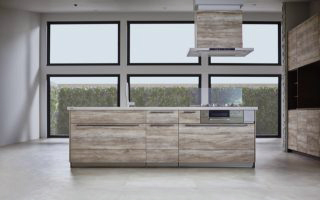
2019
Cleanup Kitchen Town Yokohama (Yokohama Showroom) opened

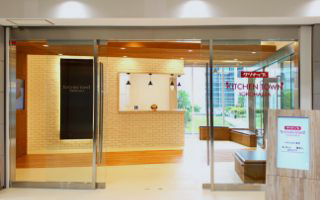
The new kitchen "Hiroma" jointly developed with Hida Sangyo Co., Ltd.
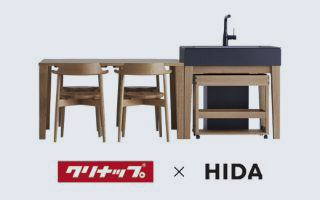
2021
Iaponica, a model developed jointly with Valcucine (Italy) for the Japanese market only

